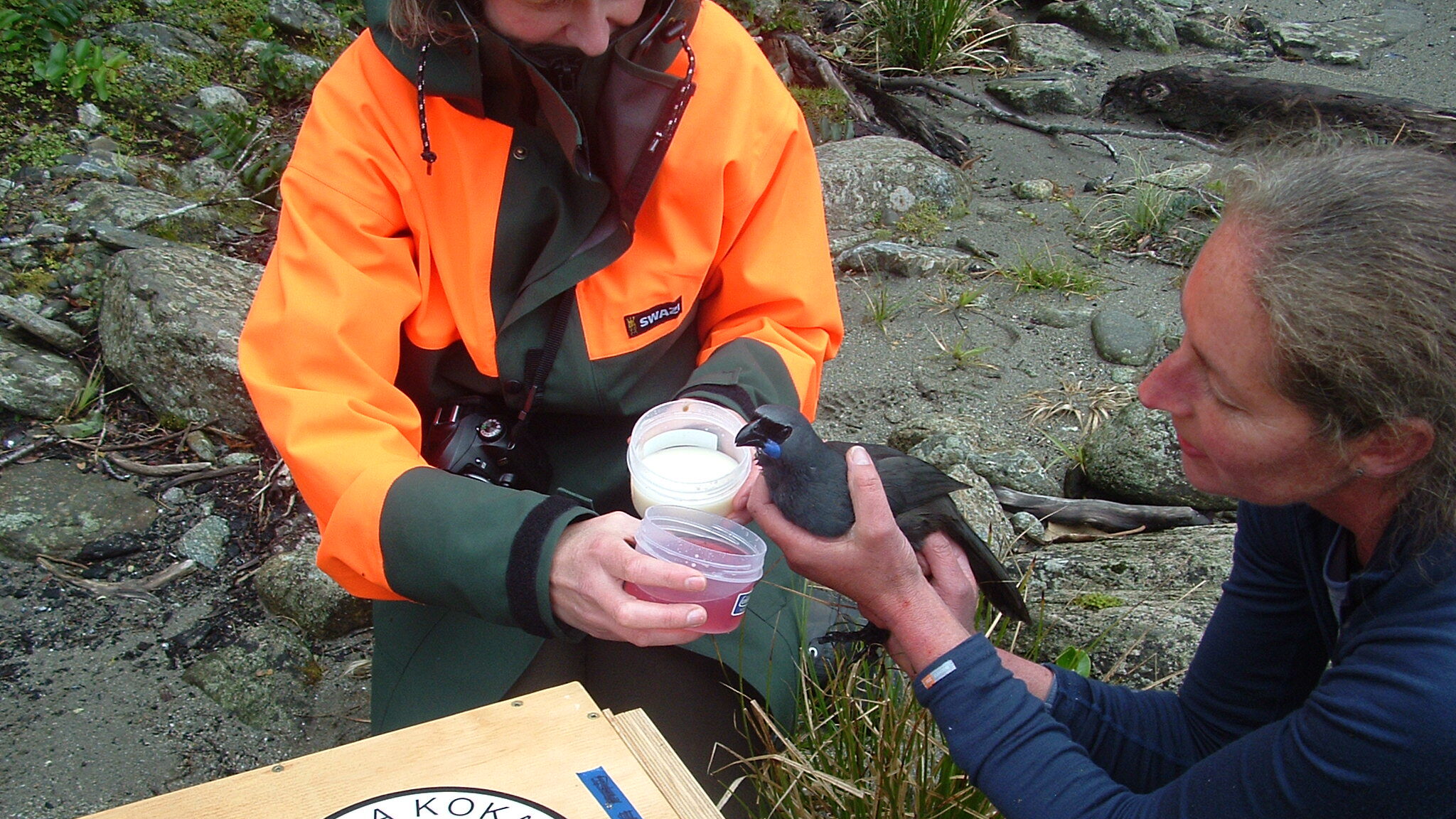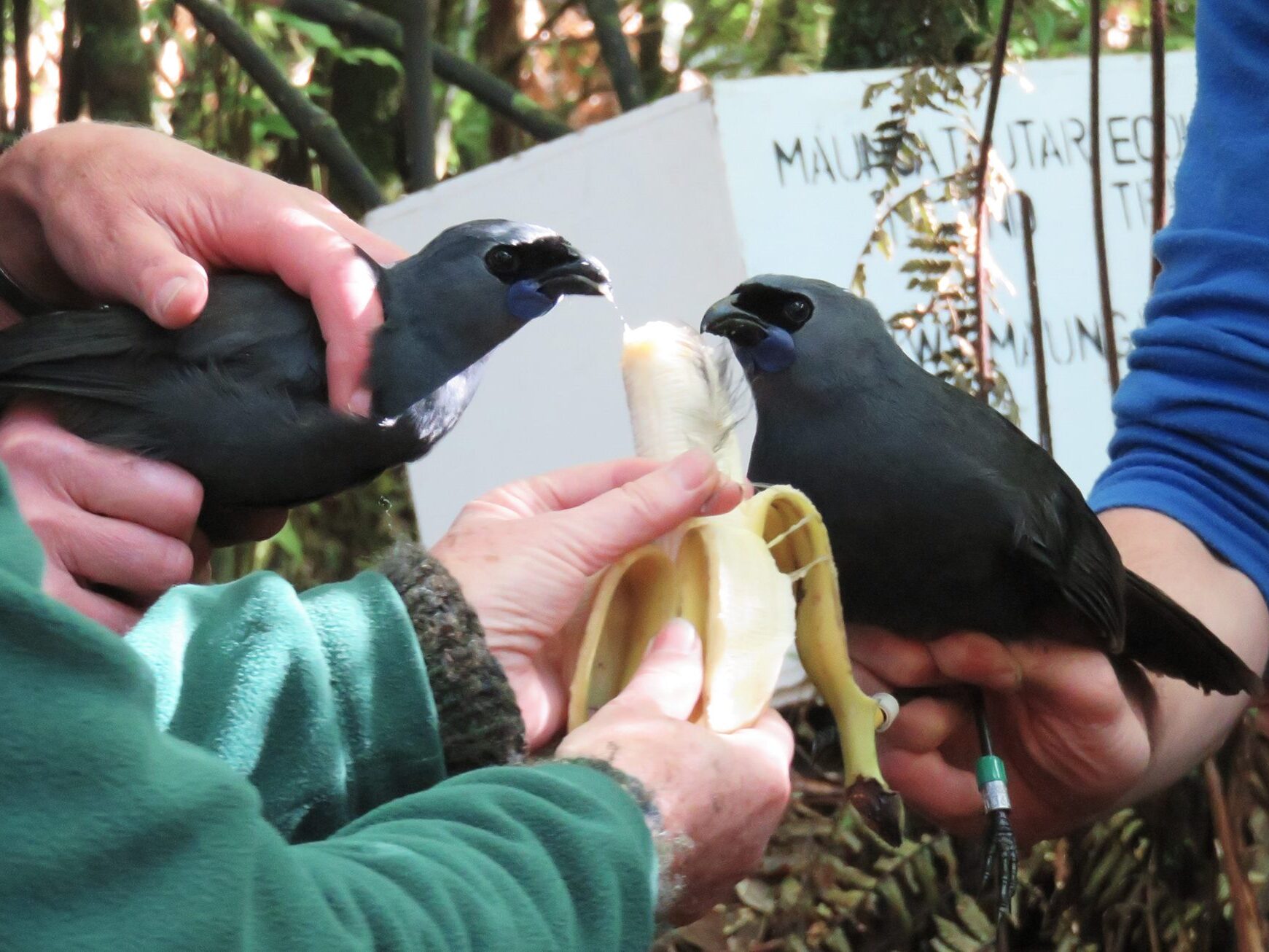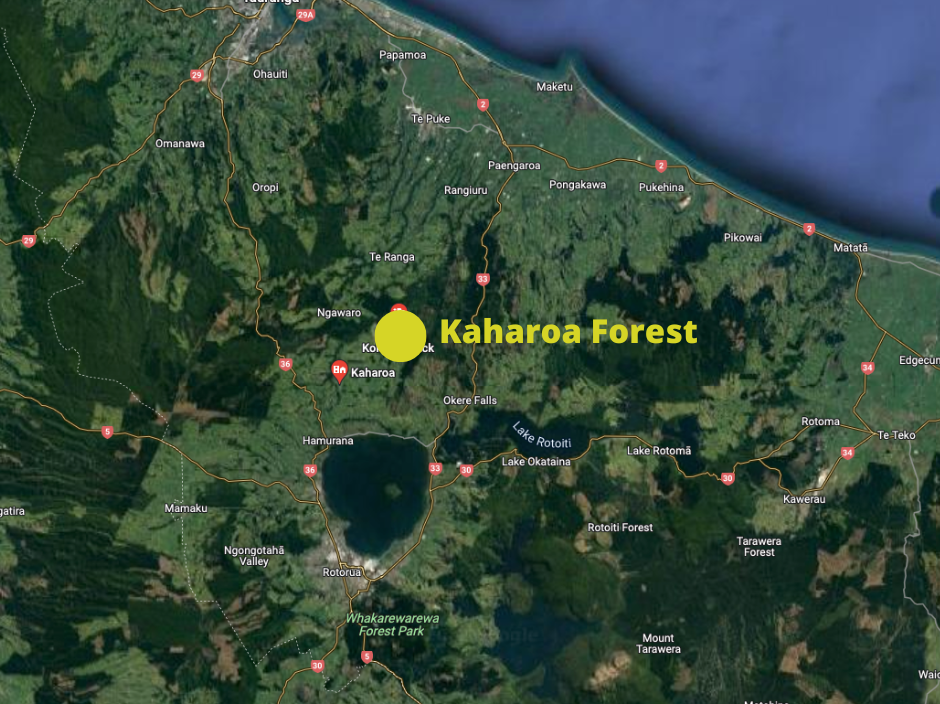The Kaharoa Forest near Rotorua is a kōkako stronghold with a relict (original) population still holding on. Thanks to decades of predator control, bird numbers there have steadily risen, but to keep the population growing and thriving, the kōkako need more habitat.

The Kōkako Ecosystem Expansion Programme (KEEP) has ambitious plans to overcome this habitat hurdle. We caught up with KEEP to find out what makes the project so unique.
Building bridges
North Island kōkako are iconic birds. With their dusky grey plumage, bright blue wattles, and hauntingly beautiful call, they bring an ethereal beauty to our forests. Kōkako have wings, but they use them for hopping, jumping, and gliding their way through the bush.

A genetically sustainable kōkako population requires 250 breeding pairs spread over 2000 hectares of bush. The Kaharoa Forest managed by the Kaharoa Kōkako Trust (KKT) is just under 1000 hectares. Because the KKT is a small group of volunteers, they knew they needed to form a bigger group to solve this problem. That’s where KEEP comes in.
KEEP is already making great gains in extending the birds’ habitat. Powered by the diversity of its members – including iwi, farmers, foresters, private landowners, and volunteer conservation groups like Kaharoa Kōkako Trust (KKT), they’ve stuck into predator control in existing forests, and fencing and tree-planting projects are on the horizon.
Raponi Wilson, a key stakeholder in KEEP and representative of Tapuika iwi, says the project is ground-breaking in its kaupapa. Part of what makes KEEP special, he says, is the way it’s breaking down boundaries between Māori and Pākehā and between public and private interest groups.
Kaharoa Forest is part of Tapuika’s ancestral lands, but, he says, “we’ve been disconnected from that land for a long time.” Getting boots on the ground to do the mahi of planting trees and controlling predators is a fantastic opportunity to reconnect iwi with their whenua, Raponi says.
Alongside mana whenua Tapuika iwi and Ngāti Rangiwewehi, KEEP stakeholders include the Bay of Plenty Regional Council, the Department of Conservation (DOC), KKT, Bay Conservation Alliance, Kōkako Recovery Group, Ōtanewainuku Kiwi Trust, Paraiti Catchment Care Group, Port Blakely Ltd, QEII National Trust, Forest & Bird, as well as local enthusiasts and consultants. Between them, they cover large tracts of land in the district while bringing different areas of expertise to the project.
A Te Araroa trail for wildlife
When KEEP needed an operational hub, Raponi had an idea. “I instantly went back to my iwi and said, ‘Hey, there’s this cool kaupapa, and there’s this bird that needs our help.’”
Kōkako from different forests have different dialects – much like people from different parts of the country. Raponi pointed out that by listening to this relict population of kōkako in Kaharoa, “we could hear the same song that our ancestors used to listen to.”

“That resonated with our people,” he says. “From our traditional knowledge, we know that our language was informed by the environment around us.”
Straight away, he says, he had people saying, “what do we need to do?”
He purposely involved rangatahi Māori in the project. Not only does it connect them to the Kaharoa, but it opens a career pathway for them. “Because we’re thinking sustainably about our natural biodiversity, we also have to think sustainably about our people. Without the people and the stewardship they bring, it’s going to fluff out,” he says.
“Having young rangatahi Māori work alongside KKT volunteers helps bridge that gap between peoples as well – between Pākehā and Māori,” he says. “It’s the young people that will carry this forward.”
Revitalising natural spaces and connecting people to the land benefits more than kōkako. Ultimately, Raponi points out, it’s a model that would serve the whole country – imagine creating a Te Araroa trail for native wildlife. As Raponi puts it, “why not be the first country in the world with a band of uninterrupted native biodiversity from top to bottom?”
Standing on the shoulders of (local) giants
The Kaharoa Forest wasn’t always alive with the lush, sonorous notes of the kōkako that are heard today. It was a small group of plucky locals who protected these birds to get to a time when more habitat is needed.

Carmel Richardson is a founding member of KKT and KEEP and a passionate advocate for the birds. She first got involved with kōkako in the early 1990s. At that time, researchers were stumped because “kōkako numbers were still declining even though forest clearance had stopped,” she says.
A team of researchers from DOC and the Forest Research Institute designed an eight-year project to figure out what was going on. The research spanned three sites with relict kōkako populations – including the Kaharoa Forest.
They set traps for stoats and applied baits for rats and possums during the first three years to get predator numbers down.
At the end of the first four years, the data was clear. “With pest control, the birds increased incredibly in all conservation areas being managed,” Carmel says. But to really prove that traps and baits were necessary, they stopped all predator control for the next four years as part of the research.
“Those four years were tough,” Carmel admits. “Because we couldn’t intervene.” Eggs and nest-bound chicks were easy prey for introduced predators, but even adult kōkako struggled. She says the last two years of the study were particularly heartbreaking – “chick fledging success went from over 80% to 0% in just two years.”
When the research project ended in the late 1990s, it was clear that kōkako need good predator control to breed successfully. But unfortunately, the funding to do this vital mahi had also finished. The community stepped up, and a group of passionate locals set up the Kaharoa Kōkako Trust (KKT) to continue the predator control work.
Support the vision
If you’re keen to support KEEP’s mission, you can make a donation to the group. Or, if you live in the area, volunteer your time by getting in touch with the group’s chair Alfred Duval ([email protected]).
You can also think about how you could make connections where you live. Backyard trapping and tree-planting with local conservation groups are all part of this wider vision.

